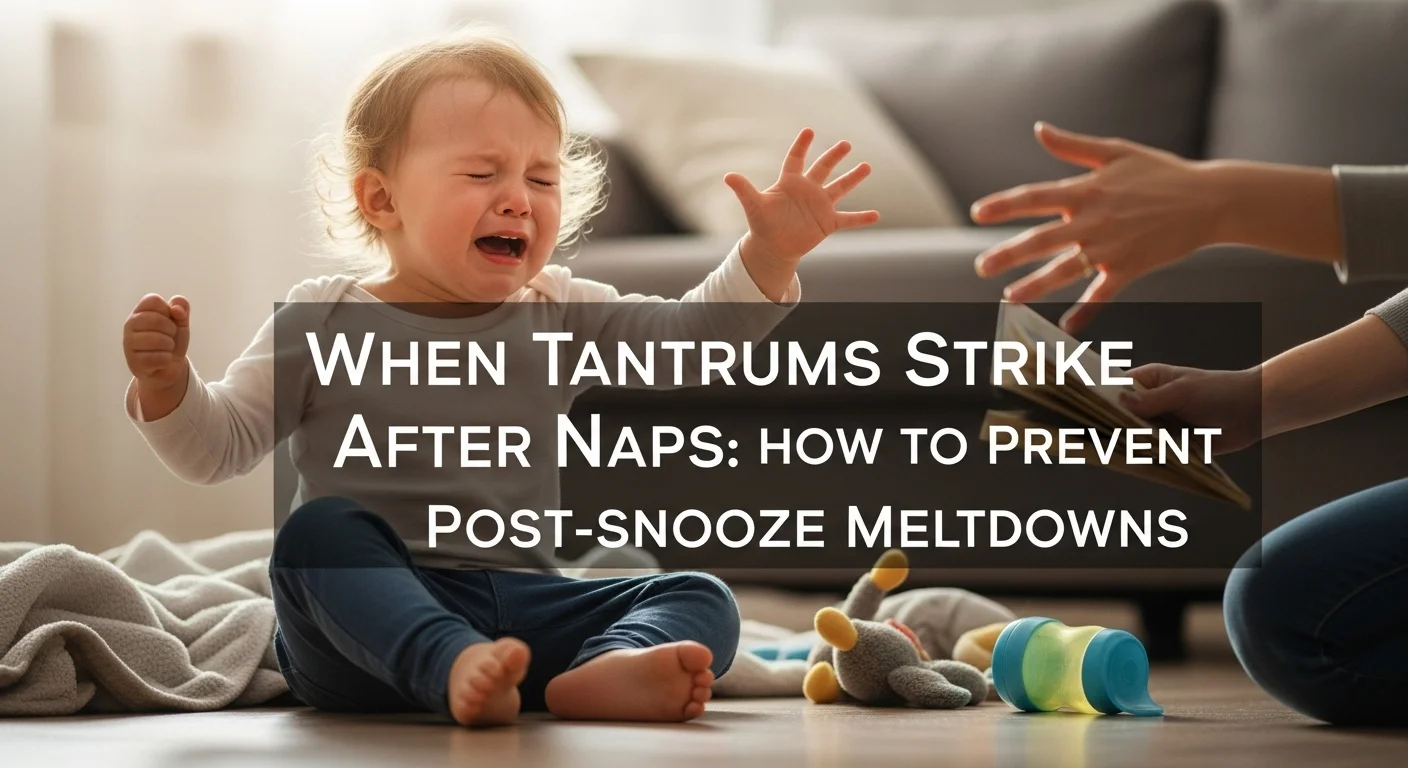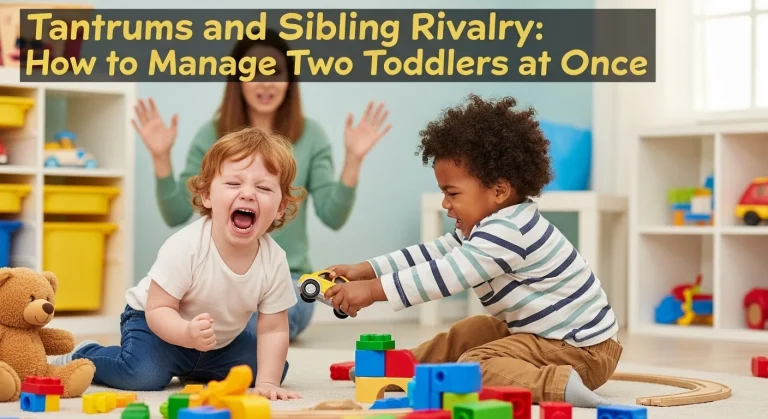When Tantrums Strike After Naps: How to Prevent Post-Snooze Meltdowns
Introduction: The Tantrum That Follows Rest
It seems unfair, doesn’t it? You finally get your toddler to sleep. You clean up, maybe sip some tea, take a breath—and then nap time ends… with a meltdown.
You’re not alone. Post-nap tantrums are surprisingly common in toddlers. What feels like rest for us doesn’t always feel the same for them. In fact, that transition from dreamland to real life is often the trigger.
In this article, I’ll break down why tantrums happen after naps, how to prevent them, and the strategies that have helped me (and many other moms) reduce post-nap chaos.

Why Toddlers Have Tantrums After Naps
Tantrums after napping usually stem from sleep inertia—that groggy, disoriented feeling even adults sometimes get. But in toddlers, the emotional regulation tools aren’t developed enough to handle it.

Here are key reasons:
1. Sleep Inertia: Waking Too Quickly
Waking from deep sleep can confuse toddlers. Their brain is still in “rest mode,” but their environment demands alertness. This transition often results in frustration, confusion, and yes, tears.

2. Hunger or Thirst
After sleeping, toddlers might wake up dehydrated or hungry. They can’t always articulate that need, so they act out instead.

3. Disrupted Routine
If nap times are inconsistent, their internal clock gets confused. The result? A cranky, overtired toddler who lashes out emotionally.

4. Separation Anxiety
Even brief separations can trigger clinginess. Waking up without mom nearby can feel scary, especially if they’re already in an emotionally vulnerable state.
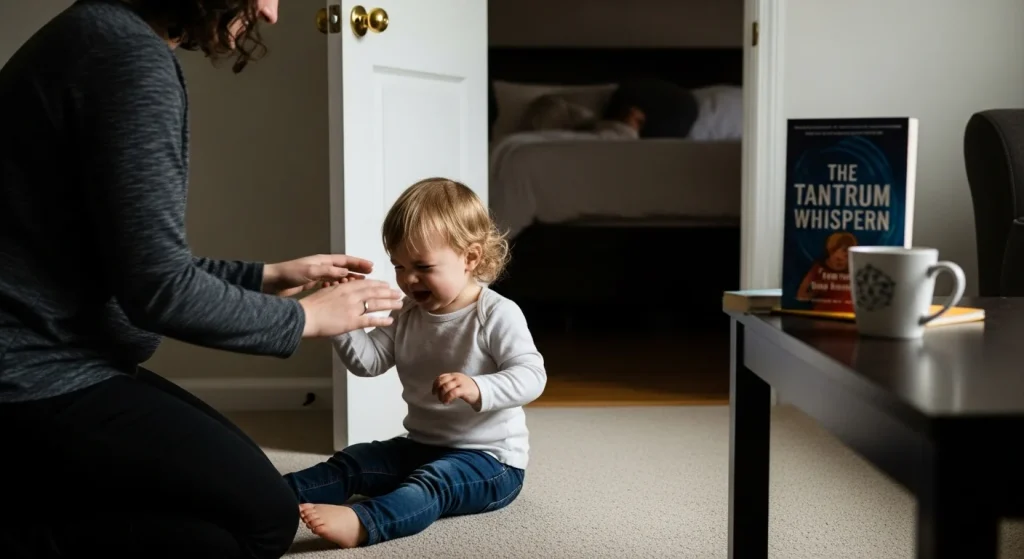
Signs Your Child Is Prone to Post-Nap Tantrums
- Grogginess that lasts 20+ minutes
- Extreme clinginess after waking
- Screaming or kicking immediately after naps
- Refusing snacks or transitions post-nap
Identifying these patterns helps tailor your response ahead of time.
My Story: “The Meltdowns Got Worse Before They Got Better”
When my daughter turned 2, nap time became a battle—not just going down, but waking up. Every day, she’d wake up wailing. One day, after a 2-hour nap, she screamed for 30 minutes straight and refused to let me touch her.
I started researching, testing, and tracking everything: timing, room environment, routines. It took weeks, but I finally created a flow that worked.
And it’s what I’m sharing with you now.

10 Proven Ways to Prevent Post-Nap Tantrums
Let’s get into the solutions.
1. Create a Gentle Wake-Up Routine
Instead of letting your toddler wake up abruptly, ease them out of sleep.
Try:
- Opening the curtain slowly
- Soft music or white noise fade-out
- Gentle touch or calling their name calmly
This helps the brain adjust gradually.

2. Keep Nap Times Consistent
Toddlers thrive on routine. Napping at the same time daily helps their body anticipate rest and wake cycles.
Pro Tip: Use a visual clock or timer to show nap countdowns. It gives them a sense of control.

3. Offer a Comfort Item at Wake-Up
My daughter loved waking up with her favorite stuffed bunny. It became her “nap buddy” and gave her comfort even before I entered the room.
Other moms swear by a soft blanket, familiar book, or lullaby playlist that continues post-nap.

4. Use Transitional Activities
Don’t jump straight into high-energy tasks after naps. Ease the transition.
Ideas:
- Quiet snuggles on the couch
- Reading a book
- Drinking warm milk
- Soft music play
This sets the tone for emotional stability.

5. Hydrate and Offer a Snack
Have a sippy cup or fruit bowl ready. Bananas, yogurt, or small crackers help stabilize blood sugar levels, which reduces irritability.

6. Give Them Space (If Needed)
Some toddlers want time alone when they wake up. If they push you away, honor that with quiet observation.
Say:
“I’m here when you’re ready for a hug.”
This gives them a safe space without pressure.

7. Avoid Overstimulating Environments Post-Nap
Bright lights, loud TV, or demanding siblings can overwhelm a sleepy brain. Keep things soft and calm for 15–30 minutes post-wake.
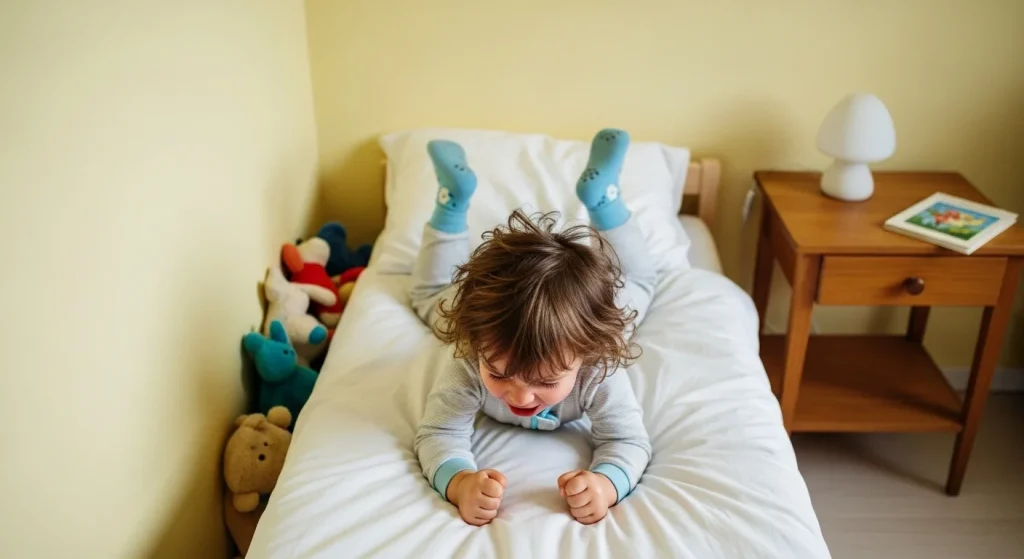
8. Teach Emotion Words Through Play
When calm, use storybooks and pretend play to teach phrases like:
- “I feel sad”
- “I need help”
- “I don’t like that”
It empowers them to express feelings later—instead of screaming.
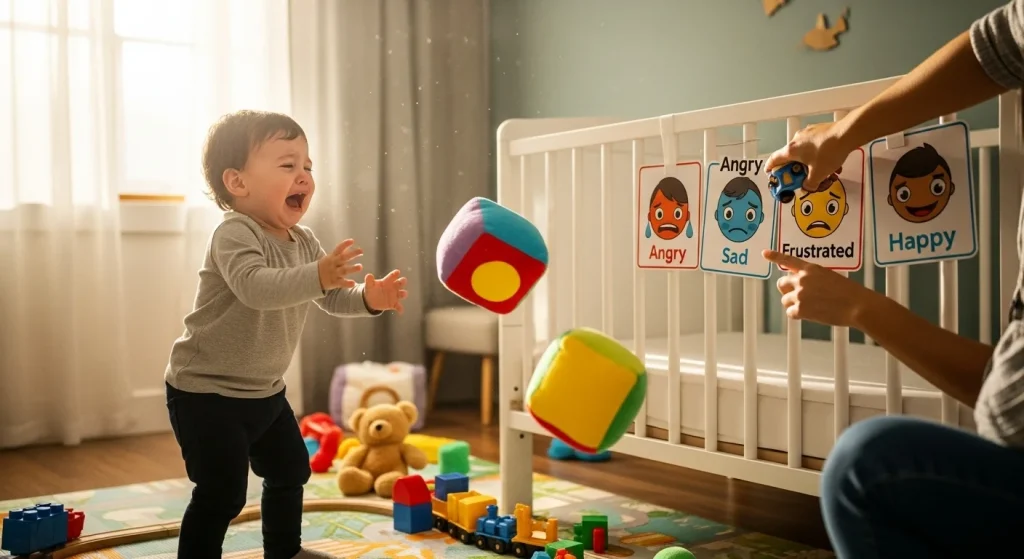
9. Validate Feelings Without Reacting
The best thing I did was stop arguing. Instead, I said:
“I know waking up can feel yucky. I’m right here.”
Validation + calm tone = faster recovery.

10. Track Sleep Quality
Keep a journal to note nap length, wake-up mood, and timing. Over time, patterns emerge. Maybe your child needs a shorter nap. Or an earlier one.
Use that data to adjust and prevent future meltdowns.
Calming Activity Ideas to Use Post-Nap
Let’s get practical. Here are 15 quiet, soothing activities you can use to calm your toddler post-nap:
- Sticker books
- Water painting
- Quiet coloring
- Lacing cards
- Wooden puzzles
- Sensory bin with dry rice
- Calm-down bottle with glitter
- Soft music with dancing scarves
- Reading soft-cover books
- Light massage or lotion rub
- Simple yoga stretches
- Blanket forts
- Playdough with lavender scent
- Rocking in a chair together
- Sorting pom-poms or beads
These help transition them gently into the rest of the day.
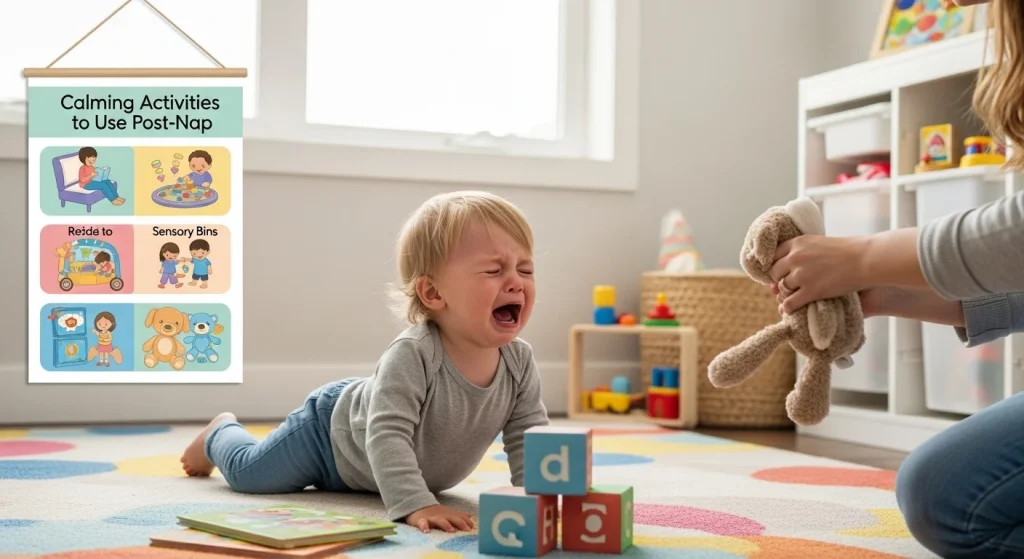
Troubleshooting: When Tantrums Keep Happening
If you’ve tried all this and tantrums persist:
- Check for overtiredness
- Adjust nap environment (too hot? too loud?)
- Rule out discomfort: teething, allergies, hunger
- Evaluate screen time—limit blue light before nap
- Revisit bedtime routine—it impacts nap quality too
Natural Anchor Integration
A related way to boost emotional development post-nap is by setting up a calming toddler environment—including their bedroom. Color, layout, and sensory setup all matter.
Check out this helpful guide on budget-friendly kids’ room makeover tips to create a soothing post-nap space your toddler will actually love.
Final Thoughts: Your Calm Will Be Their Calm
I wish I had known sooner that my energy set the tone. When I stressed, she screamed louder. When I slowed down, softened my voice, and accepted the meltdown as communication—everything changed.
Tantrums don’t disappear overnight, but they become easier to understand, manage, and even prevent.
So, mom to mom—you’re doing great. And this phase? It won’t last forever.

